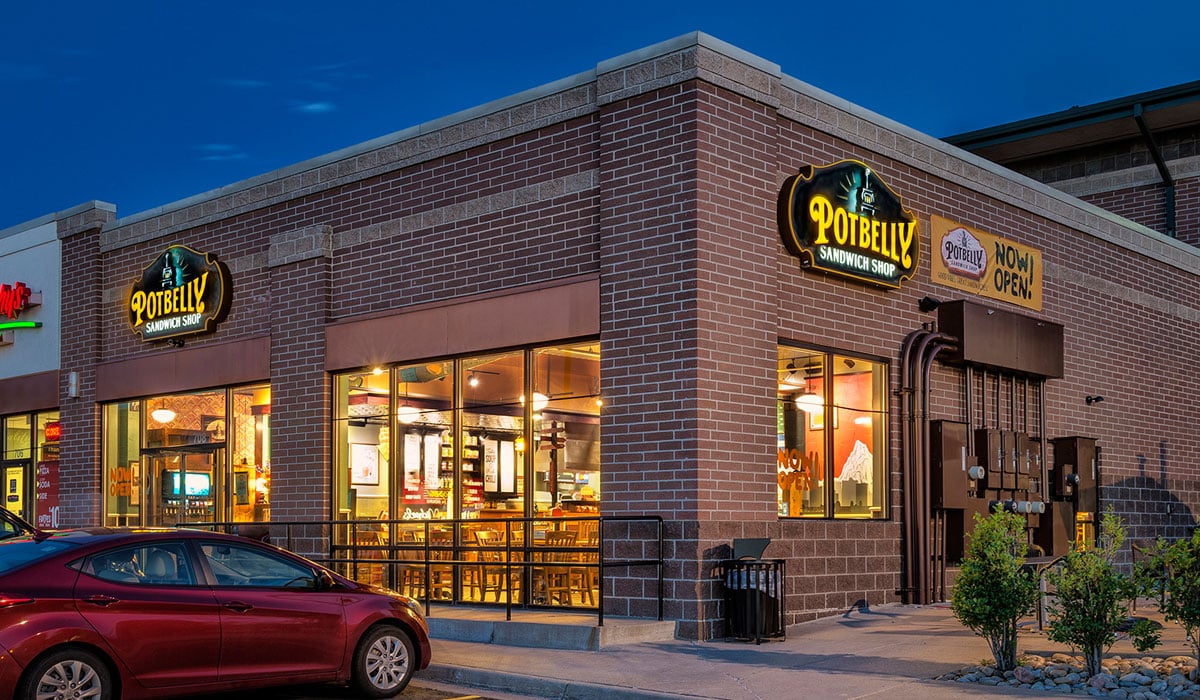To reinvigorate the company, Potbelly spent 2021 reimagining its menu, digital infrastructure, and corporate leadership. The new initiatives led to expectation-exceeding results, CEO Bob Wright said.
The chain continued progress into the first quarter, in which same-store sales lifted 24.4 percent year-over-year and total revenue grew 25.8 percent. Adjusted EBITDA for the quarter was a loss of $2.3 million, but still a significant improvement from a $6.6 million loss last year.
Even with Omicron and weather-related headwinds at the start of the quarter, the brand achieved record AUV in March. Wright attributed that to digital channels, including a Perks loyalty program that’s lifting engagement. The online and web platforms drove top-line performance through higher average check, more traffic, and better accessibility.
Digital growth benefits employees, as well, with Potbelly added tipping to online orders.
“Our customers now have the ability to demonstrate their appreciation directly to our associates for delivering our special good vibe service,” Wright said during the chain’s Q1 earnings call. “We’ve seen extremely encouraging results from this initiative, including better service for our customers and better pay for our associates.”
Wright also owed the brand’s sales strength to “significant recovery” in airport and central business district shops. Those segments delivered their strongest AUV performance since the onset of the pandemic, thanks to increased travel and workers heading back to downtown offices.
“We’re particularly encouraged by the recovery of these shop types. Our expectation is that they will serve as a tailwind supporting our broader portfolio as we continue along our path to growth,” Wright said.
READ MORE: Off Transformational Year, Potbelly Sets Sights on 2,000 Restaurants
In terms of development, Potbelly wants to lean more into franchising. The chain is planning to refranchise approximately 25 percent of its company units in the next three years, and will look to sign new shop development agreements. The long-term goals are 10 percent annual unit growth for franchisees, $1.3 million in AUV, and 2,000 stores, with at least 85 percent being franchised.
Currently, the brand is building its pipeline of multi-unit franchise candidates, enhancing franchising and refranchising market planning, and fortifying sales and marketing tactics. The fast casual is also developing and implementing internal control systems, processes, and tools to make itself more desirable to potential operators.
With Potbelly making strides in the past year, Wright said the company is prioritizing efforts to protect profitability, which includes menu price increases. The chain took 5.4 percent in February, and two more hikes are planned for the rest of 2022.
“We are planning two more price increases through the year, but I would emphasize, similar to the thoughtfulness that we put into this past price increase—they’re discretionary to a certain extent … as we see the inflationary environment evolve as well as the consumer behavior environment evolve. We want to make sure that we are flexible in determining what level we want to adjust those prices,” CFO Steve Cirulis said.
Wright said pricing is a necessary move, but noted the decision didn’t come without careful consideration.
“So we’re looking at a lot of things internally that measure the customers’ perception of value and how they’re reacting to those price increases and ensuring that especially for our loyal customers,” he said. “Sure some [customers] have noticed it, but we’re really pleased with the flow-through and the persistent consumer demand. And that’s what’s really kind of governed our ability to price out the inflation while still holding on to that consumer demand. We think we’ve got all of the right hydraulics in place to balance that out the rest of this year.”
Potbelly is continuing to build staffing levels to maintain its sales trajectory. In addition to hourly wage increasing 14 percent in Q1 year-over-year, the chain has invested in referral programs and new recruiting measures. The digital tipping program has provided more than $1 million in incremental compensation. Still though, labor costs were down 200 basis points compared to last year.
The brand has achieved net hiring, a considerable improvement from what Wright described as the “worst environment” he’s seen in over 30 years.
“It has gotten better for us,” he said. “We can always use more high-quality people, but we’re not in crisis mode and certainly in a much, much better position than we were even six months ago. Our expectation is that many of the workplace things that we’ve been working on—training and staffing and positioning guidelines and the labor guidelines, the management staffing that we’ve done—all of that is beginning to bear more and more fruit for us … We’re very pleased with where we are but not yet satisfied.”
Potbelly is on track to deliver 2022 projections, which include record AUVs, double-digit same-store sales growth, and low double-digit shop level margins. Second quarter revenue is projected to be between $110 million and $116 million, with shop margins between 9 percent and 11 percent.
“We have and continue to work diligently to expand our franchise marketing and sales tactics as well as the tools to develop our pipeline of multi-unit franchise candidates. We look forward to building upon the great momentum we achieved in the first quarter as we progress towards our goals,” Wright said. ” … As I said last quarter, we have the team, we have the brand and we have the strategy to deliver.”







